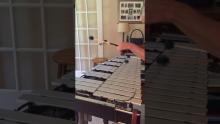Alternating Two Voicings by Behn Gillece
Chinese translation is for Chinese students
常常我們在Comping時,會限制在一個和弦只有一種voicing(和聲配置)
但是如果能在一個和弦上找到不同的voicing,並且是有和聲進行(Harmonic motion)的,會讓comping聽起來更豐富。
可以看看PDF檔中,Behn的例子是用藍調(Blues)來說明這個“互換兩個和聲配置”(Alternating two voicing)
熟悉了之後,可以開啟節拍器,按照速度演奏,再自己加上一些節奏感,這會是很好的練習。
- Read more about Alternating Two Voicings by Behn Gillece
- Log in or register to post comments



